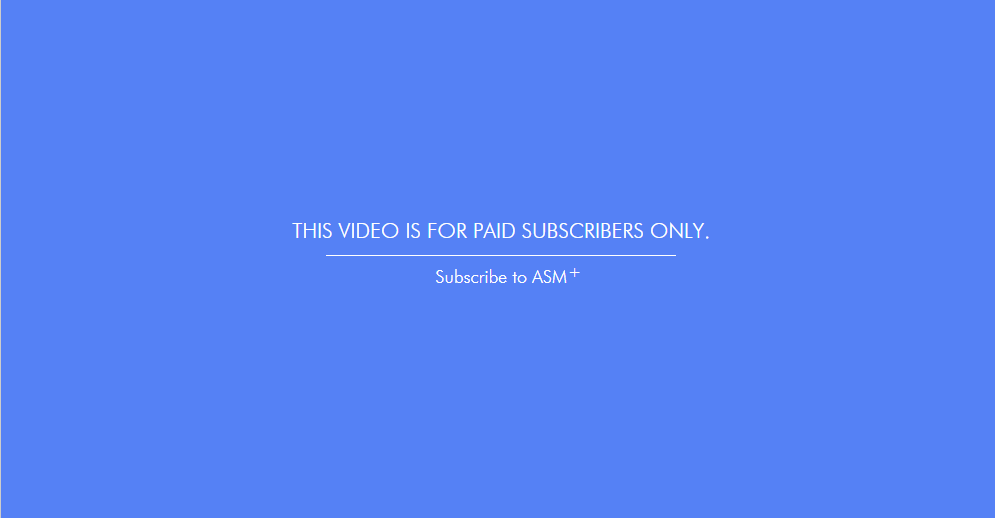Balance Sheet
Chapters
Summary Text
This video introduces the balance sheet. After a quick reminder that the balance sheet is just a formal presentation of the accounting equation, the video walks through some definitions:
BALANCE SHEET: The balance sheet shows the financial position of a company at a given moment. It may help to think of it as a photograph depicting everything that the company has (Assets), what it owes (Liabilities) and the ownership interests in the company (Stockholders’ Equity).
ASSETS: Assets consists of the physical properties of the company, money it holds or has invested and money that is owed to the company. You can also have intangible assets, such as goodwill.
LIABILITIES: Liabilities include debts incurred in the ordinary course of business (accounts payable and other obligations), and more formal borrowings (notes from a bank).
STOCKHOLDERS’ EQUITY: Stockholders’ equity represents the ownership interests in the company.
Because these concepts can still be a little abstract the video then walks through an illustrated example to provide greater context. In the example you are asked to consider the items you would require to start a company and determine how you would finance the purchase of these items.
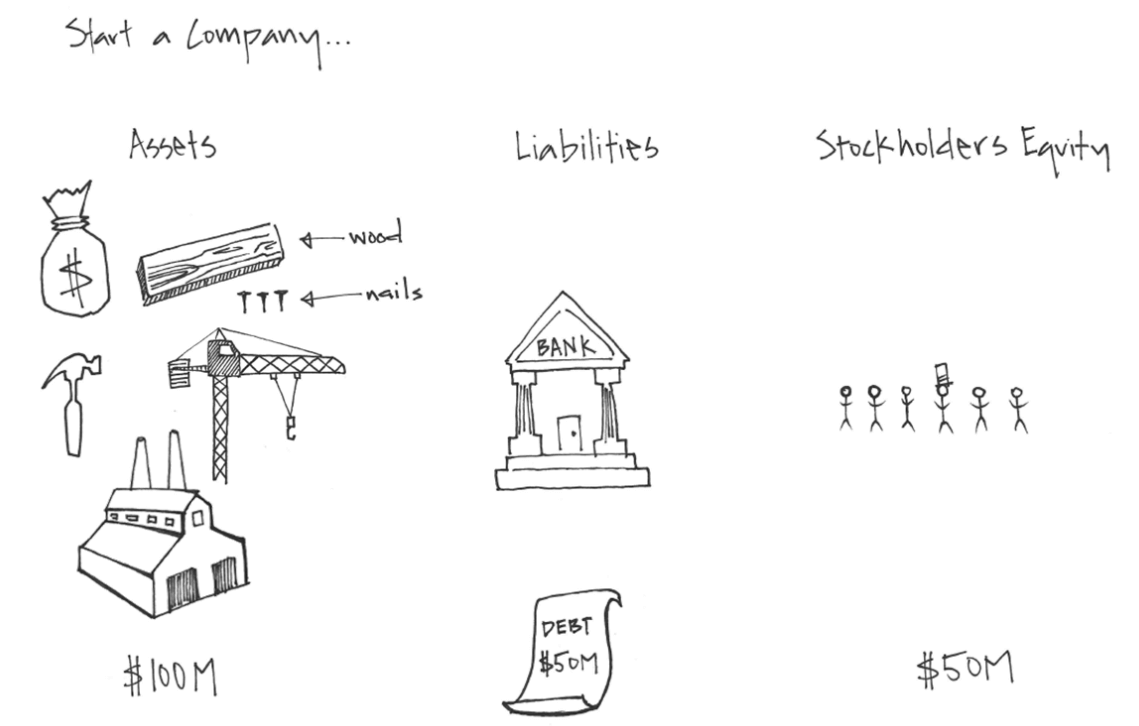
Rearranging these items vertically provides a familiar order that begins to resemble a balance sheet. On the right hand side of the illustration you will note that the accounting equation holds true as well.
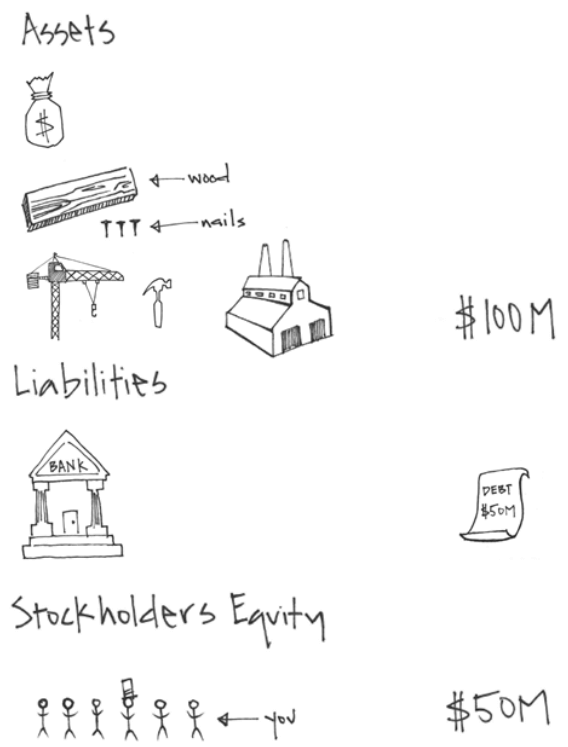
The video then transitions back to a more thorough balance sheet to walk through a few more definitions.
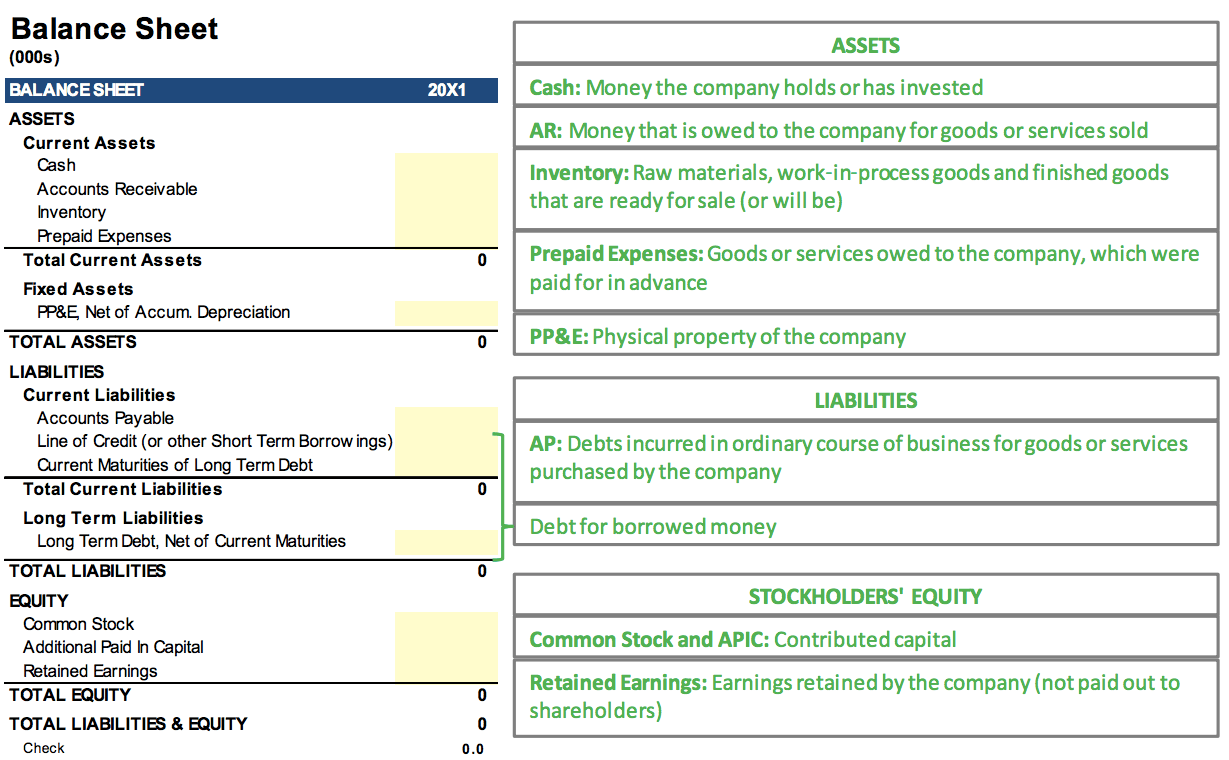
The expanded accounting equation is revisited to elaborate upon the components of stockholders’ equity with a focus on contributed capital and retained earings, both of which are defined below.
Contributed Capital: Investors or owners contribute capital to a business hoping for two potential cash flows.
- Dividends
- Gains from selling the stock at a higher price.
Retained Earnings: Earnings not distributed, but reinvested. The video also points out that this account grows by net income, which is an important relationship.
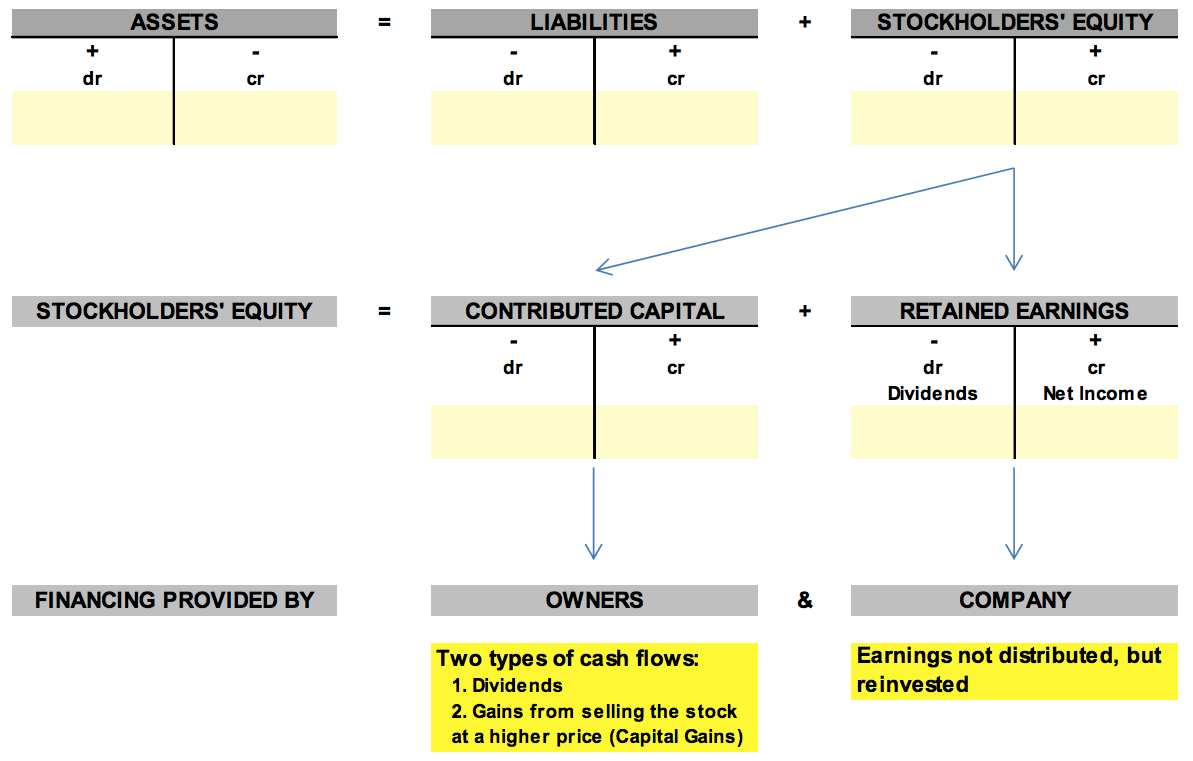
To demonstrate how the relationship between retained earnings and net income translates into a financial model in excel the video walks through a couple examples. First by showing the relationship as pictured below, and then by showing the relationship in a fully integrated financial model.
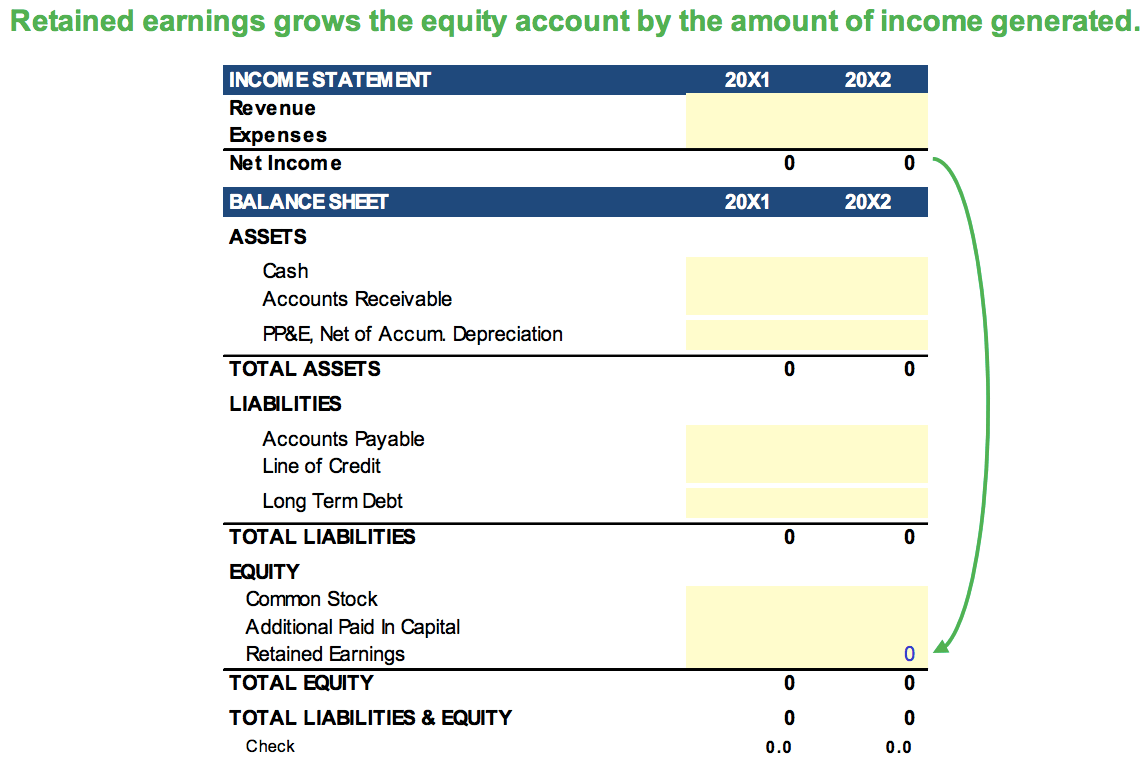
The video then points out (broadly) the relationship between the balance sheet and the cash flow statement.
- An increase in an asset account consumes cash.
- An increase in a liability account provides cash.
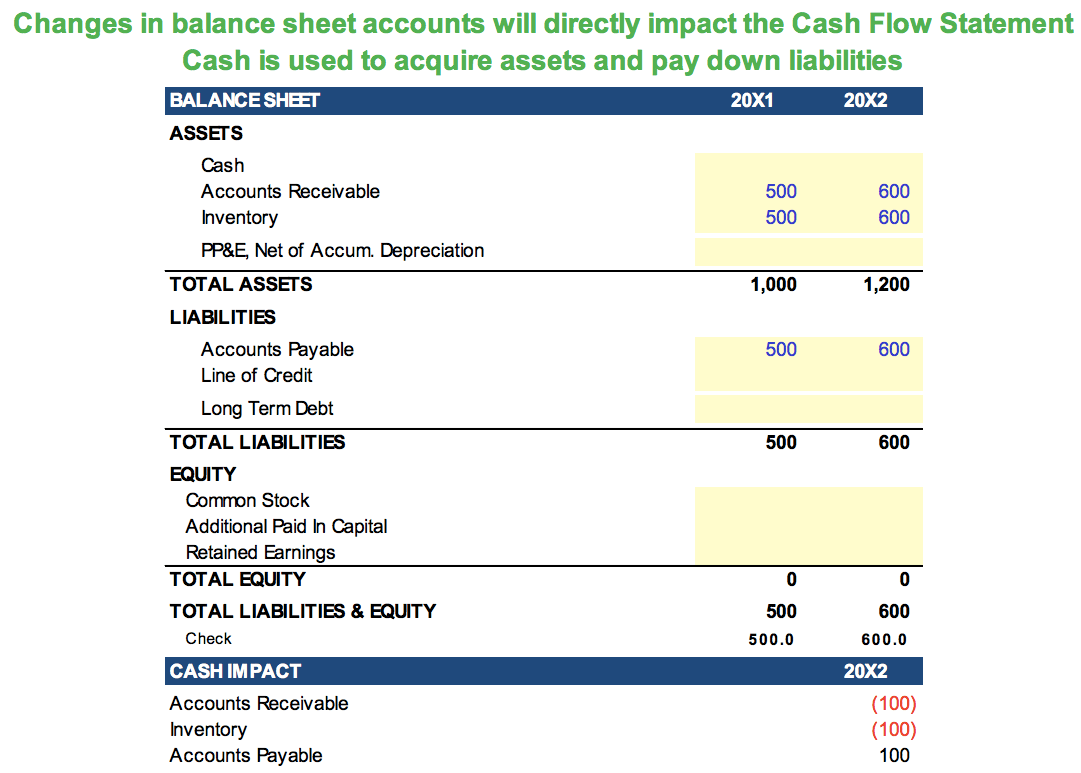
The video concludes with an illustration to begin describing how the three primary financial statements relate to one another: The balance sheet shows the financial position of a company at a given point in time, and the income statement and cash flow statement show the economic activity of a company over a given period of time. In this way consecutive balance sheets are essentially linked by income statements and cash flow statements. The difference is that the income statement shows economic activity on an accrual basis of accounting, and the cash flow statement shows economic activity on a cash basis of accounting. This is elaborated upon in the video that follows.
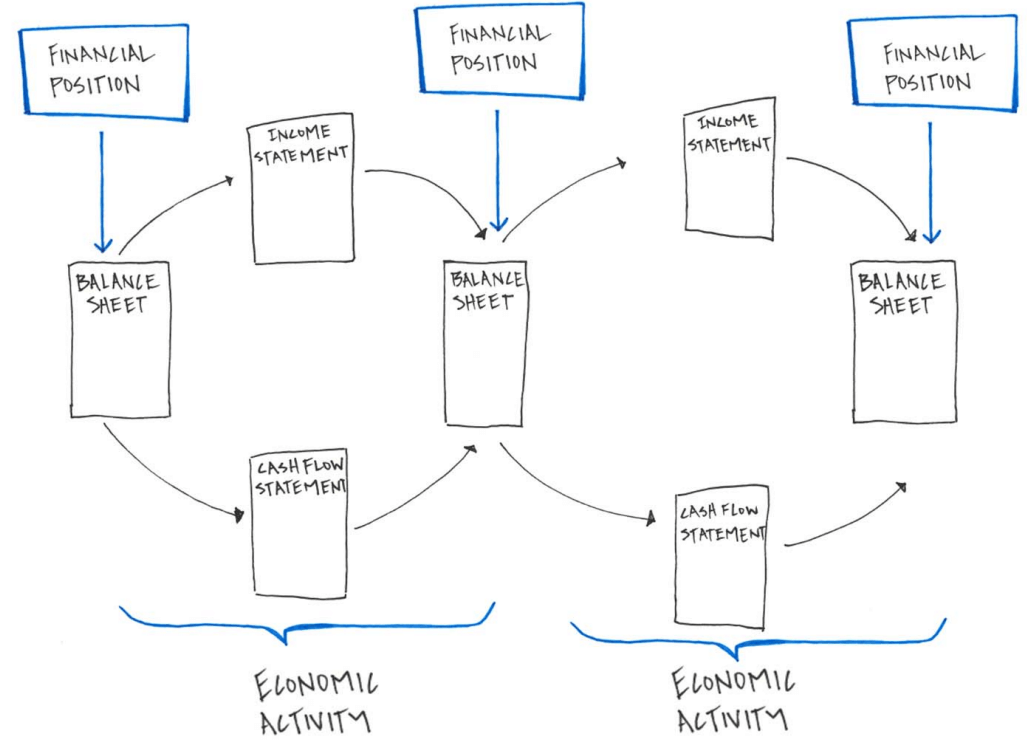
POSTED BYADMIN Tags:IFS002, Financial Statements, Balance Sheet, Working Capital, Asset, Liability, Equity

